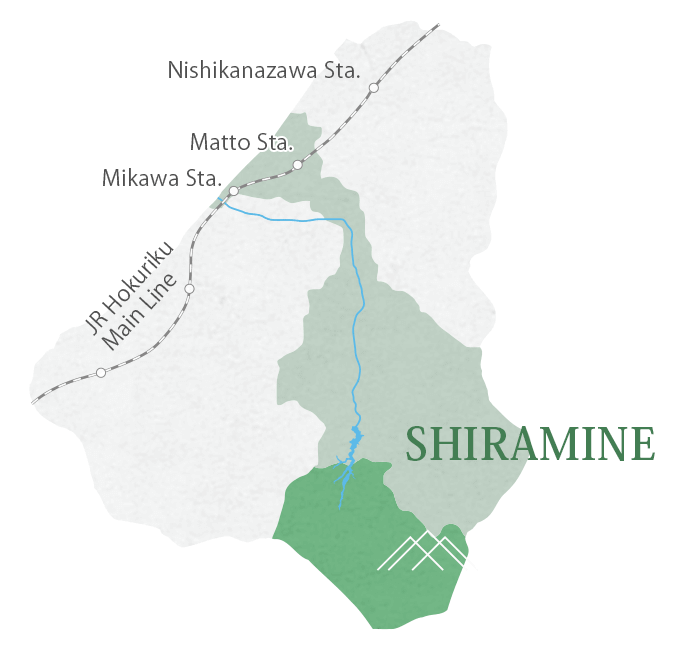
Shiramine, the southernmost part of Hakusan City, is a 90-minute drive from Kanazawa Station. Here, you can immerse yourself in a traditional community. The townscape of the good old days is still there, and you can meet a lot of warm-hearted people.
Shiramine Preservation District for Groups of Traditional Buildings
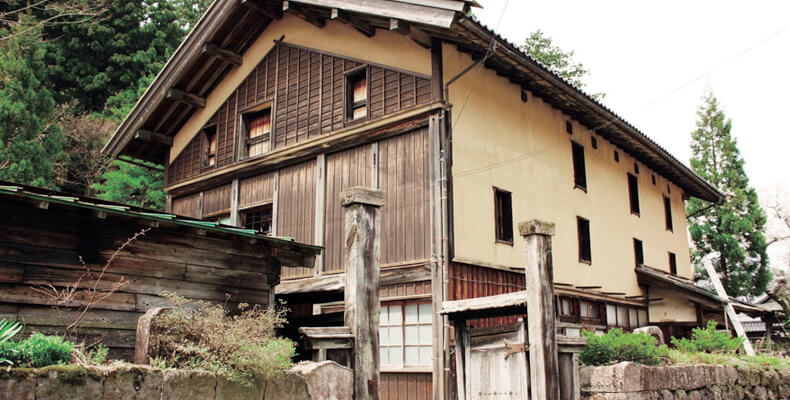
 One of the heaviest snowfall areas in Japan, Shiramine has retained its unique architectural style. It was selected as a Preservation District for Groups of Traditional Buildings by the Agency for Cultural Affairs on July 9th, 2012. The main street is lined with a series of private houses built from the Edo Perid through the Meiji Period, including the house of the Yamagishi family, who served as village officials called oshoya. The house is characterized by its ocher walls and long vertical windows. After strolling around, you can have a leisurely tea break at Yukidaruma (snowman) Café.
One of the heaviest snowfall areas in Japan, Shiramine has retained its unique architectural style. It was selected as a Preservation District for Groups of Traditional Buildings by the Agency for Cultural Affairs on July 9th, 2012. The main street is lined with a series of private houses built from the Edo Perid through the Meiji Period, including the house of the Yamagishi family, who served as village officials called oshoya. The house is characterized by its ocher walls and long vertical windows. After strolling around, you can have a leisurely tea break at Yukidaruma (snowman) Café.
| Address | Shiramine, Hakusan |
|---|---|
| Open | Yukidaruma Café: 10:00am ~ 4:00pm |
| Closed | Yukidaruma Café: Tuesday and Winter (Dec. ~ Mar.) |
| Access | Kaga-hakusan bus: Shiramine/ By car: 80min-ride from IR Matto Station |
| Parking | Yukidaruma Café: 3 vehicles |
| Tel | 076-259-2721, Yukidaruma Café: 076-259-2071 |
Rinsai-ji Temple and Hakusan-gezan-butsu
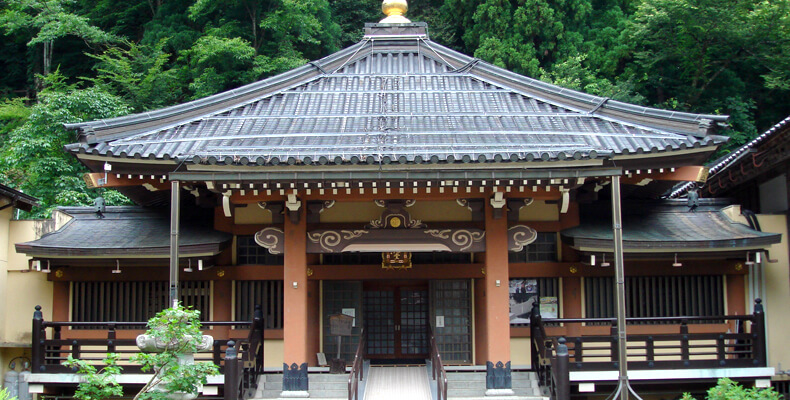
A lot of venerable Buddhist statues were enshrined at the top of Mt. Hakusan a long time ago. However, they had to be removed after the Edict on the separation of Shintoism and Buddhism was issued in the Meiji Period.
Rinsai-ji Temple houses a seated statue of Taicho Daishi, a Buddhist monk, and seven Buddhist statues that allow us a glimpse into the history of Mt. Hakusan worship. Among the statues is a bronze standing statue of Eleven-faced Kannon (the original divinity of Mt. Hakusan), an important cultural property designated by the central government.
This temple with a long and distinguished history was founded by Taicho Daishi, and tells us about the history and culture of Mt. Hakusan.
| Address | i-68 Shiramine, Hakusan |
|---|---|
| Open | [Jan. ~Mar.] 10:00am ~ 3:00pm [Apr. ~ Dec.] 8:30am ~ 4:00pm |
| Closed | Tuesday |
| Admission | Adults: ¥400 (group of 10 or more people: ¥350) Primary and junior high school students: ¥200 |
| Access | Kaga-hakusan bus: Shiramine/ By car: 80min-ride from IR Matto Station |
| Parking | 10 vehicles |
| Tel | 076-259-2041 |
Shiramine Hakusan Dinosaur Park
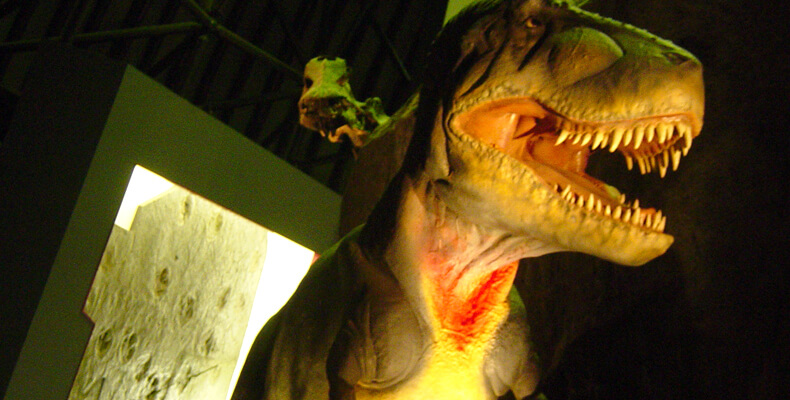
A towering T-Rex welcomes you.
Here, a variety of exhibits and a mini-theater will take you on a time-trip into the world of dinosaurs.
You can enjoy diverse exhibits, including a meticulous diorama of the Age of Dinosaurs, three-big-screen multiple slides, and dinosaur and plant fossils.
You can also try fossil hunting on the fossil discovery ground.
Fossil excavation is very popular among elementary school children. Even small children can play with stones on the site with their older brothers and sisters, so all family members can have a good time.
| Address | 4-99-2 Kuwajima, Hakusan |
|---|---|
| Open | 9:00am ~ 5:00pm (Admission until 4:30pm) |
| Closed | Monday (if it is a holiday, the following day) and winter season |
| Admission | [Use of fossil discovery site] Adults: ¥850 Primary and junior high school students: ¥400 [Without use of fossil discovery site] Adults: ¥520 Primary and junior high school students: ¥200 [Only use of fossil discovery site] Adults: ¥550 Primary and junior high school students: ¥300 |
| Access | Kaga-hakusan bus: Kuwajima/ By car: 80min-ride from IR Matto Station |
| Parking | 60 vehicles |
| Tel | 076-259-2724 |
Hakusan Ushikubi Workshop
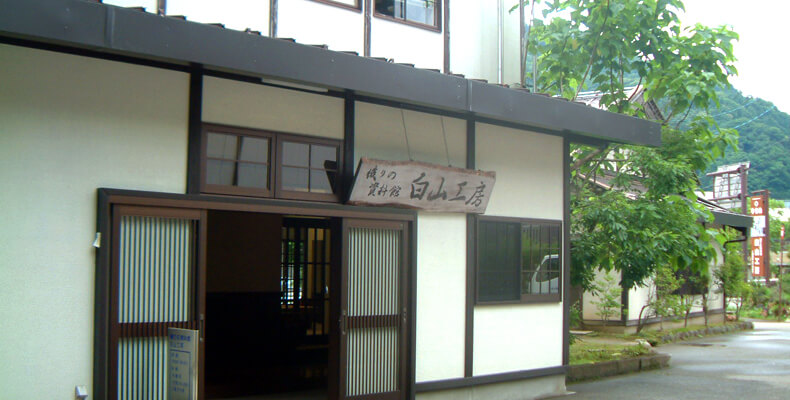
Ushikubi pongee silk is a traditional local craft into which the style derived from the time-honored culture and traditions of the mountainous area is boldly incorporated. Special threads reeled from dupion cocoons that two silkworms happen to make are hand-woven and turned into beautiful kimono.
The silk is said to have originated when a family of the Minamoto clan fled to the village and taught the technique to the villagers after the Heiji Rebellion (1159). The technique is designated as a prefectural intangible cultural property.
You can see what the process of producing Ushikubi pongee silk is like by watching craftsmen at work.
Simple and durable Ushikubi pongee silk is used for kimono, sashes and a variety of smaller items. You can try weaving and making your own coaster by operating a real handloom. Traditional handiwork gives you the joy of making things.
| Address | Nu-17 Shiramine, Hakusan |
|---|---|
| Open | 9:00am ~ 4:00pm (Closed: 12:00pm ~1:00pm) |
| Closed | Thursday and winter season |
| Admission | Adults: ¥400 (group of 15 or more people: ¥350) Children: ¥250 (group of 15 or more children: ¥200) |
| Access | Kaga-hakusan bus: Shiramine-kitaguchi/ By car: 90min-ride from IR Matto Station |
| Parking | 10 vehicles |
| Tel | 076-273-2400 |
Hakusan Alpine Plant Garden
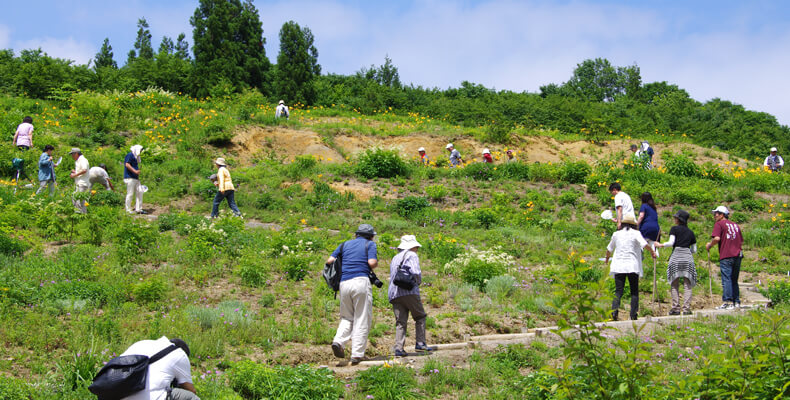
This is a facility located 800 meters above sea level, where experiments are conducted to grow alpine plants at lower altitudes.
It is open to the public from June through July.
Alpine plants that you could once only see if you climbed Mt. Hakusan are here, and you can see them a little earlier, although the time is limited. In front of the parking lot, you will find a mountain trail leading to the garden. It takes about seven or eight minutes to walk there. Why not spend a peaceful moment with a variety of colorful alpine plants?
| Address | Nishiyama, Shiramine, Hakusan |
|---|---|
| Open | 9:00am ~ 4:00pm June1 ~ July15 (Admission until 3:00pm) |
| Closed | July16 ~ May30 |
| Admission | Adults: ¥300 (as donation to Alpine Plant Conservation Project) High school students or younger: free |
| Access | By car: 80min-ride from IR Matto Station |
| Parking | Available |
| Tel | 076-259-8866 |
Hakusan Foothills Museum of History and Folklore
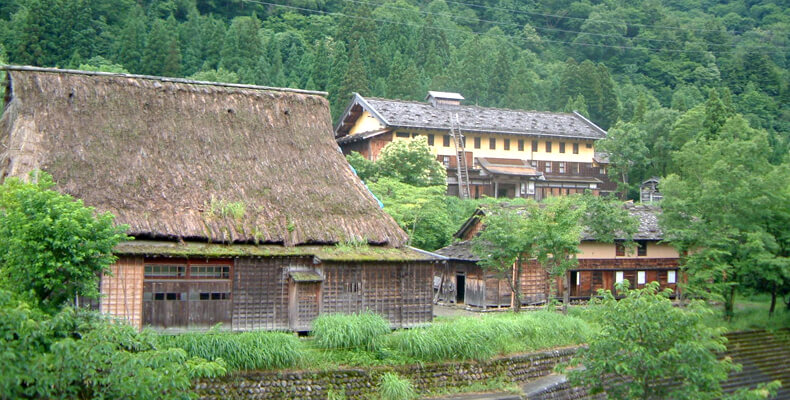
This outdoor museum in the Shiramine district is devoted to the lifestyle of people who lived at the foot of Mt. Hakusan. Old traditional houses have been relocated here, and tools used in the olden days are on display. The museum houses a cultural heritage that is passed down in the mountain village.
Events to experience the lifestyle that is unique to Shiramine are organized throughout the year.
- Straw work (May through October), Slash-and-burn (August)
- Obal alder (Alnus fauriei) dyeing (May through October), Indigo dyeing (August)
- Traditional threshing (October), Kaya (grass used for thatching) cutting (November)
- Enjoying dishes for Ho-onko (memorial service for the founder of the Buddhist sect) (November), Tochi-mochi (rice cake made with Japanese horse chestnut) pounding (December)
Other activities
- Sericulture, Solving quizzes related to traditional lifestyle, Sampling a snack made from finger millet flour, Experiencing the winter lifestyle, Strolling around Shiramine
| Address | Ri-30 Shiramine, Hakusan |
|---|---|
| Open | 9:00am ~ 4:30pm (Admission until 4:00pm) |
| Closed | Thursday (if it is holiday, the following day) and winter season |
| Admission | Adults: ¥260 (group of 20 or more people: ¥210) People aged 65 or older: ¥200 High school students or younger: free |
| Access | Kaga-hakusan bus: Shiramine-kitaguchi/ By car: 80min-ride from IR Matto Station |
| Parking | 30 vehicles |
| Tel | 076-259-2665 |
Hakusan National Park
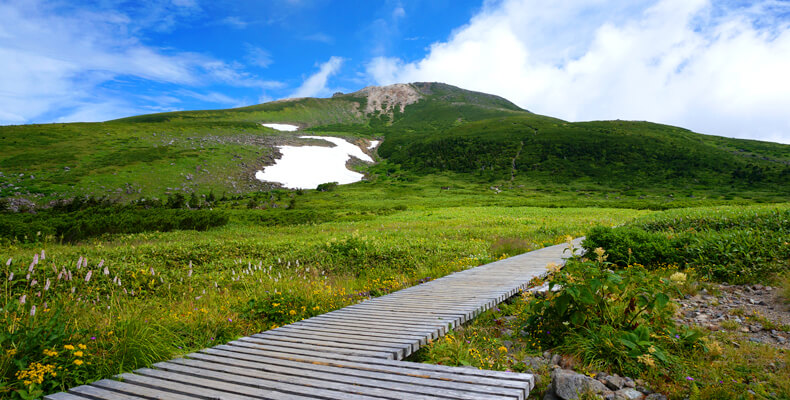
Mt. Hakusan is one of the three great mountains of Japan. The others are Mt. Fuji and Mt. Tateyama. The year 2017 marks the 1,300th anniversary of its first ascent.
The top part of the mountain is composed of three peaks: Gozen-ga-mine (2,702m), Onanji-mine (2,684m) and Ken-ga-mine (2,677m). It was known as "Shirayama" or "Koshi-no-shirane" a long time ago, and those names appear in waka poems. Legend says that Taicho, a Buddhist monk from the Echizen area, was the first to climb Mt. Hakusan and to train there in 717, and his ascent was the beginning of pilgrimage mountain climbing. Hakusan Okumiya Shrine is at the top of Gozen-ga-mine, which is full of alpine plants. The mountain slope is covered with a primeval forest of beech and other trees. Hiking up Mt. Hakusan is a wonderful experience in spectacular surroundings. As the sunrise and the starry sky seen from Mt. Hakusan are very beautiful, the best choice is to climb the mountain on a sunny day.
| Address | Shiramine, Hakusan |
|---|
Hakusan Murodo
| Open | Jul. 1 ~ Oct. 15 |
|---|---|
| Capacity | 750 people |
| Charge | (Incl. dinner and breakfast) Adults: ¥11,300 Junior high school students or younger: ¥8,400 |
Hakusan Raichoso
| Open | Jun. 25 ~ Oct. 13 |
|---|---|
| Capacity | 21 people |
| Charge | (Incl. dinner and breakfast) Three-person room ¥45,500~ Four-person room: ¥60,000~ |
Nanryu-sanso
| Open | July 1 ~ Oct. 15 |
|---|---|
| Capacity | 150 people |
| Charge | (Incl. dinner and breakfast) Adults: ¥11,100 Junior high school students or younger: ¥8,400 |
Nanryu-ga-baba Cabin
| Open | July 1 ~ Sep. 30 |
|---|---|
| Capacity | 5 people/room |
| Charge | ¥14,000 (Incl. bedding without meals) |
| Parking | Available |
| Access | Hokutetsu bus (Hakusan mountain bus): Ichinose/ By car: 130min-ride from IR Matto Station, 110min-ride south on Route 157 from Hakusan IC |
| Tel | [Murodo reservation] Hakusan Tourism Association: 076-273-1001 [Nanryu Sanso and Cabin reservation] 076-259-2022 |
| Web site | http://www.kagahakusan.jp/en/ |